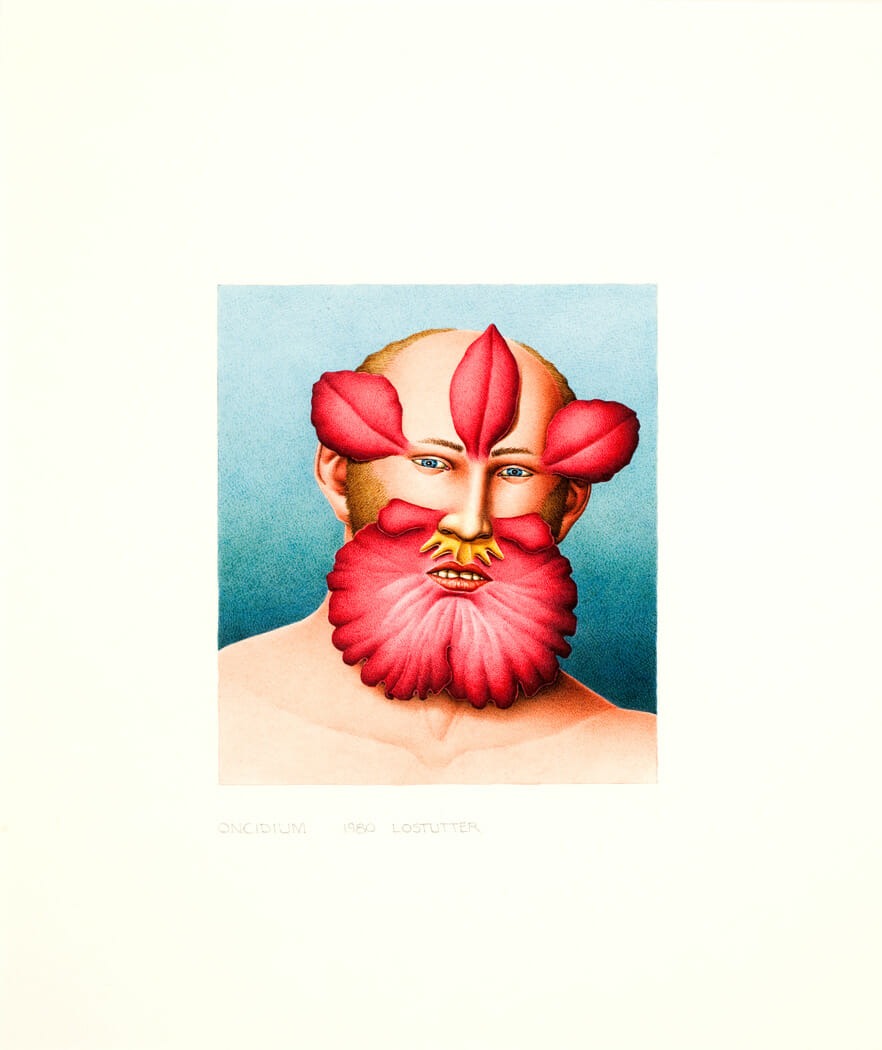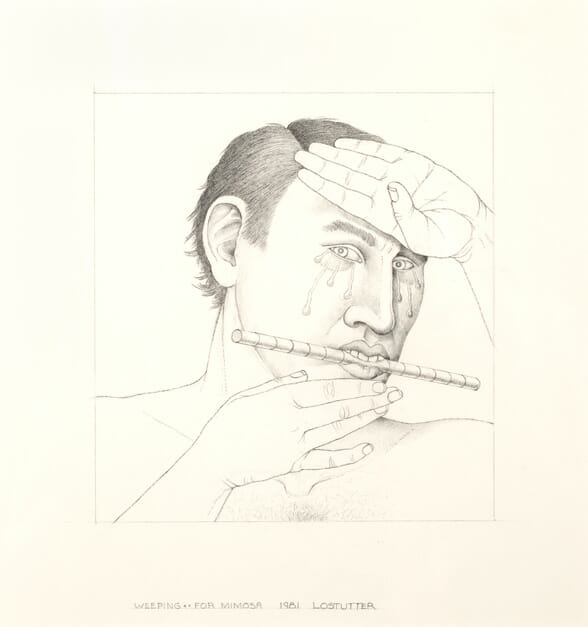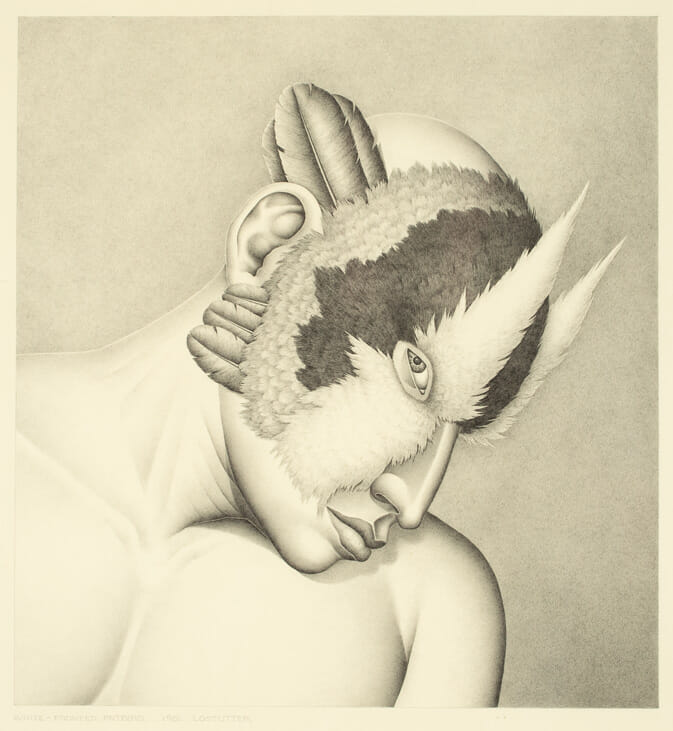
Robert Lostutter
Born: 1939 (Emporia, KS, United States)
Although Robert Lostutter did not participate in group exhibitions at the Hyde Park Art Center, he was a member of what is now known as the Chicago Imagist circle. Lostutter attended the School of the Art Institute of Chicago (SAIC) in the late 1950s and early 1960s, and shared his contemporaries’ interest in figurative imagery based in popular culture and fantasy. He was greatly influenced by the instructor John Rogers Cox, who stressed traditional drawing and painting techniques. While today Lostutter is renowned for his meticulous watercolor process, early in his career he primarily used the medium to create preliminary studies for larger oil paintings. By the 1970s, he saw the potential in refining his watercolor method and it soon became his preferred medium. Lostutter saves all preparatory drawings and color charts and—wishing to expose the seams of his process and attribute value to each additive step—included several examples of each in a 2006 retrospective exhibition at the Chicago Cultural Center.
Like Ed Paschke, Lostutter became critically acclaimed for his composite figures. But where Paschke focused on distorted or mixed-and-matched figures from the mass media, Lostutter blurred the distinction between human, plant, and animal. Returning from a trip to Mexico in the 1970s, Lostutter became increasingly mesmerized by the otherworldly beauty of the tropical birds he had encountered in his travels. Subsequently, he began to make drawings and paintings of bird-men transfigured by multicolored and richly textured feathers. His gaze soon expanded to the muted tones of female birds, where he saw a subtle beauty that contrasted with the exuberance of male plumage. In the exotic world of Lostutter’s hybrid individuals, human faces are masked with feathers and sometimes complemented by leaves growing from their bodies.
Lostutter’s paintings envision a complete integration of man and nature in paradise. The way in which his figures peer out of the frame suggests the opening of communicative channels between their world and ours; sometimes they appear to be preening, other times they seem to appeal for their own conservation. The artist’s bird-humans echo Max Ernst’s surrealist fascination with the same hybrid creatures and John James Audubon’s extensive catalog, Birds of America. His interests are not limited to birds; in recent years he has also become fascinated by women wearing complicated costumes, viewed from distorting vantages. He also continues to be absorbed by Eden and the concept of paradise.
Artworks

The Birds of Heaven 14, Red-fronted Conure
1974

Green Backed Fire-Crown and Fork-Tailed Woodnymph
1983

Three studies and poem for Trader of Green
c. 1998

Four preparatory drawings and six palettes (Studies for Rainforest)
c. 1991

Toucan (preparatory drawing and tracing)
c. 1975

Preparatory drawing and two palettes (Study for Plate-Billed Mountain Toucan)
1986-1990

Preparatory drawing and two palettes (Study for Plate-Billed Mountain Toucan)
1986-1990

Preparatory drawing and two palettes (Study for Plate-Billed Mountain Toucan)
1986-1990

Three preparatory drawings (Study for Parrot Watching the Sun Go Down)
1986

Three preparatory drawings (Study for Parrot Watching the Sun Go Down)
1986

Three preparatory drawings (Study for Parrot Watching the Sun Go Down)
1986

Two Hummingbirds (Study for Scintillant Hummingbird and Gorgeted Woodstar)
1982

Scintillant Hummingbird and Gorgeted Woodstar
1982

Garnet-Throated Hummingbird and Purple Carib
1984

Cinnamon Hummingbird and Allied Emerald
1984

Hummingbirds – Gould’s Jewelfront and Blue Throated Hummingbird
1988

The Man Who Remembers What Birds Once Looked Like
1973

Morning for the Plate-Billed Mountain Toucan
1989




















































































